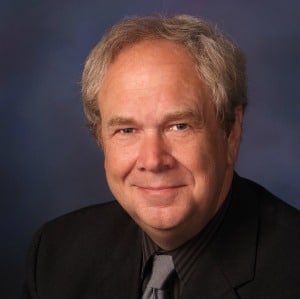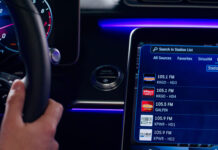
AM Swaps Noise and Static for Ones and Zeros.
(By Ben Downs) The FCC is expected to give AM Revitalization another tool for the competitive toolkit. In his Chairman’s Blog on Monday, Chairman Pai revealed the next step in his work toward making the AM band the equal to its digital competitors. The October 27th Open Meeting includes a vote on a Report and Order in response to a proposal Bryan Broadcasting filed around Thanksgiving last year where we asked to FCC to approve authority for a full digital broadcast mode using the HD radio system.
The struggle is real and is faced by AM operators every day. The devices we rely on for information and entertainment create a toxic environment for AM broadcasting. Every smart phone charger is a tiny AM noise generator. Because we try to broadcast in this noisy environment, we find our choices in formats becoming ever more narrow as listeners have come to expect audio without the noise. The niche formats that work on AM keep getting smaller.
Building on the work done over the past two years by Dave Kolesar on Hubbard’s digital WWFD and David Layer’s NAB real world testing program, the FCC feels comfortable that they have another solution to offer AM stations that struggle in the marketplace. And unlike many of the rules, these changes are voluntary.
The AM all-digital system allows any AM station to deliver what today’s audience expects. The sound is wide-band and stereo. Plus, the signal is listenable further in the fringes than the analog system it replaces. It comes complete with the ability to provide a dashboard experience with art, artist, title, as well as enhanced emergency messaging.
While most of us know manufacturers are slow to respond to AM radio problems, the solution is already in place and waiting for us to use. There are over sixty million HD radios that will pick up this new AM all-digital signal. Over half the new cars sold in 2020 include compatible AM HD radios in the dash. And that number grows daily.
Without a doubt the biggest and best thing to happen to small and medium market AM stations was the permitting of cross-band translators. It essentially allowed an AM operator to leave behind the limitations of the AM band for a much friendlier new home on FM.
Over 2800 AM operators took advantage of the FCC’s offer to broadcast 24/7 on FM.
For the lucky ones that could cover their communities with 250 watts, that was enough. A companion station on the FM band could make those AM stations relevant again. Now, operators could compete format-to-format with FM stations.
But not everyone was so lucky.
Major market FM spectrum is tight and there isn’t room for the translators. But the all-digital AM HD signal performs to a greater distance and remains clear and competitive in more awful RF conditions than we could ever expect from analog AM.
The price to pay for this new technology is the old analog signal. The all-digital is just that: digital. And that’s why this new standard is a voluntary conversion.
But in a situation like WWFD, the station had lost its AM audience as listeners migrated to the FM translator. So it made sense to move to a music format with a station that was paired with a translator and an AM with a larger coverage area.
The change worked. Dave Kolesar reports that for the first time in years, the format on WWFD has shown up in the ratings.
Something Dave said at one of his many presentations has stuck with me as I considered my own AM stations. He asked, “Would you rather take a chance competing with 30% receiver penetration, or the 10% of listeners who still favor AM?”. And as we all know, the 10% market share is slowly eroding but the number of receivers isn’t.
I see this as a competitive tool that we didn’t have, that in certain market conditions, can put us on a level playing field with other audio sources. People expect certain things when they listen to audio: artist, title, art, information, and crystal clear audio. This all-digital AM HD will be the tool that can deliver it to the dashboard… via AM.
Ben Downs can be contated by e-mail at [email protected]






The FCC never should have allowed the ultracheap electronic imports and poor power-line maintenance that has raised the noise floor so dramatically on mediumwave. A crime, in my opinion.
The FCC and the industry never should have tried to shoehorn so many stations into the band, so many that almost every channel during the day (if you’re far from noise sources, anyway) and every single channel at night is a cacophony of stations. Ten kHz spacing is itself a kind of shoehorning, leading receiver makers to narrow the bandwidth to the point that what was once a high-fidelity medium now sounds like total garbage. The band should have been MUCH larger, with larger physical AND larger frequency spacing, from the beginning — and when it got filled, a much larger FM band should have been the destination for new applicants, with existing AM stations allowed to move to VHF-FM anytime.
When digital became possible, there should have been no IBOC nonsense (designed to protect the big-money boys’ blowtorch superiority), but instead an ample high-bitrate dedicated digital band, and every station should have been allowed to migrate there to get perfect coverage of their community.
But narrow, low-bitrate IBOC digital on mediumwave? It’s going nowhere, just as it should. Even when signals are massive, it sounds worse than a 1998-era Real Audio file. If you think otherwise, you’re just fooling yourself.
Perfectly said.
The FCC, primarily, was asleep at the wheel for so many years, and not the least bit forward thinking.
Dumb and dumber. “Reviving AM” requires:
– Changing the narrow 6kHz bandwidth limit, for wider
– Getting rid of HD – nobody listens to it, except maybe you who has such a box
– Putting divestment rules in place to *free* local stations to originate programming, end the control held by the big conglomerate companies (for AM). Aka, no programming worth anything = NO LISTENERS
– Restablishing some “blow torch” actual high power, clear channel (not the company) stations.
– Going forward create stronger “incentives” to meet Part 15 or better for consumer devices, their half-life is short, so the offending ones will “drop away” over time.
Nobody is going to bother listening to the same repetitious stuff on AM if it is also on FM.
– Widen the FM band using the former Ch 5-6 region. Giving the present day AM stations, first shot, IF they are not conglomerate owned (do we need duplicates in the same market?) To establish fresh programming… let the AM band, BE the AM Band.
In addition, is it really a good idea to obsolete EVERY AM radio ever made??
And I seem to remember analog stereo AM that went nowhere. Some folks even purchased the car radios only to find that many stations either never started the service or it didn’t have the bandwidth to support 2-channels. Of course digital will if the frequency band stays stable and doesn’t drift with low power stations.
150-25000 khz (LW, AM and shortwave) suffer from skip, fading and noise sometimes. Things improve above 25000 khz or 25 MHz, as is clear on FM. Some nation’s in Europe and Asia tried a digital system called DRM and later dropped LW, most AM and most shortwave broadcasts. Lack of receivers was an issue. Good point is that FCC makes it voluntary, and there is a reliable source of the HD radios, Sangean, even handheld ones. Europe and Asia also uses DAB+ and DMB in the 174-239 MHz band. I would place future bets on FM with RDS and HD, DAB+ / DMB and internet / mobile phones. Below 25000 khz 25 MHz is ancient Mary.
I predict total lack of support for AM digital. Why would I spend $$$ to convert to a system that has no users? FM prevails because it offers much wider bandwidth, line-of-sight, lower power consumption, broader range… methinks we’re beating a dead horse.
I had a JVC HD radio in a truck I use to own and it would pickup WLS and Kmox in stereo at night and I’m 400 miles away. Sounded great! I just hope there will be some kind of digital box like they did for the TV change over available because I have several tube radios I enjoy.
Sangean., a Taiwan company, makes several great HD radios.
I already have a digital radio. “Hey Alexa!” All digital. Problem solved.
The electronics industry is giving the author sh**ty looks right about now… like HD-compatible radio production is gonna be ramped up soon… keep dreaming.
AM radio will not be saved by allowing stations to go all digital. The noise that listeners have had to endure over the years must be cleaned up. FCC do your job…that is one of the jobs you were mandated to do…the noise and interference is out of control. Digital AM won’t fix that. The bad programming is another issue. Broadcasters….treat your AM like itbis an ugly step child and you’ll receive rebellion in return…. Meaning, put garbage on the air, expect little in return. Put something on that will draw listeners and sponsors… Well everything cones full circle. Furthermore a broadcast facility is like an automobile or anything else…you HAVE to maintain it! If you don’t allow things to be fixed and maintained as they should, your station won’t sound as good as it should nor will it be reliable as it should. Do the maintenance and fix the issues as you go so it doesn’t become a huge expensive project down the road. Lastly manufacturers of radios need to stop making JUNk. Radios made 20 and 30 years ago were far superior than the ones we can buy now.
All digital and even hybrid digital transmissions will not fix the listed issues nor will it save AM radio.
Broadcasters let’s not forget the added expense to even operate digital. No one has mentioned the licensing to operate digital. Inquire with iBiquity about those licensing terms and monthly expense.
Referencing your very last point: That is why I support a digital conversion to Digital Radio Mondiale (DRM).
DRM is, by far, technically superior to Xperi/’HD Radio’. If anyone cares to do the research, it will confirm that contention on my part.
DRM is royalty and license-fee free. It is an open system to which anyone can contribute a good idea or improvement. Xperi is a for-profit company that, regrettably, was bequeathed as a monopoly by an earlier FCC.
DRM is all-digital, AM and FM. Xperi is still peddling its hybrid — part analog, part digital sidebands — mess. In that hybrid form, AM stations cannot even use HD Radio at night, without wreaking havoc on co- and adjacent-channel AMs.
So, yes, we need (and should already be) all-digital in broadcast radio. Broadcast radio is the only medium that still plods on in analog, even if it’s partial, with HD Radio. DRM should be the rational way to go, Chairman Pai and Commissioners.
Totally agree. While in Europe we have gone the DAB+ route (vhf), I wish and hope the existing AM stations could go the DRM route which would provide our continent wide coverage beyond individual states boundaries. It is good to see at least that DRM is being adopted in the Indian sub continent and China embracing a quarter of the world’s population. The US should follow and get away from closed systems which tend to be stifled and less likely to develop further.
If Am Radio goes so the fanatics on both sides of the spectrum but the FM abd Satelite Radio could pick them up on demand.
Sat-radio will just evolve into $ub$cription Internet radio in a few years when the satellites crash to Earth.
The only thing that will same AM radio is to end daytime only increase nighttime power and to eliminate all those weird coverage patterns by those 3-10 antenna towers, cover your areas full time, end those 50kw clear channel restrictions you still have millions of cars with am radio
AM’s biggest problem are owners who treat the AM in their market cluster as an annoyance giving it no resources or much attention.
For WWFD, a station that had an unmeasurable analog audience to be broadcasting all digital AM and now showing up in the ratings shows that there are a sufficient number of receivers to make all digital AM viable. Saving AM won’t happen at the FCC. It will happen in every community driven by broadcasters.
“Saving AM won’t happen at the FCC.”
I hope you’re wrong…but, I fear you may be right.
Chairman Pai repeatedly asserts the he has a ‘passion’ for AM radio…but simply will not enact the proper and needed fixes…including DRM, which I speak about, in an above comment.
Rather than drinking the digital Kool-Aid, two things could be done to ensure the survival of the AM band: 1. The FCC should clean up all the Part 15 junk that trashes the band with noise and 2. The broadcasters need to put better programming on the air. People won’t tune to AM to hear endless infomercials for quack medicines and questionable real estate deals.
Using the iBiquity digital system on the AM band totally ignores the laws of physics. Phase shift caused by skywave propagation will cause the receivers to fail to decode the digital bitstream. The DRM system used in other countries does perform better in the presence of skywave propagation; in fact, some shortwave broadcasters use it successfully. But going digital won’t magically lure people back to the mediumwave band.
AM radio is on life support. Yes, it’s still surviving in some markets but trending toward a slow death. There are so many other platforms to choose for music, news and entertainment. Translators were suppose to be the “saving grace” for AM but now there is more expensive talk to lure listeners back to the AM band. Doesn’t make sense! Unfortunately, the FCC should have done something about this in the 70s and 80s to give AM radio a fighting chance instead of “going against the grain” trying to compete with other established broadcast technologies today. With this type of thinking, go ahead and bring back 8 track tapes and players as well and see how this technology will fare today.